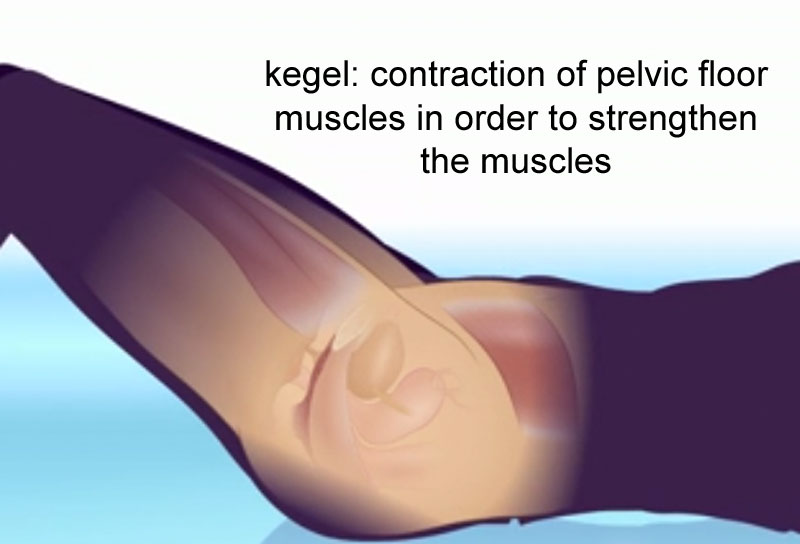Weakened pelvic floor muscles are one of the key causes of Stress Urinary Incontinence. The pelvic floor works like a hammock to support organs including the bladder, colon, and uterus. If the pelvic floor is weak, urine can leak.
The good news is that, like other muscles in the body, exercise can strengthen the muscles of the pelvic floor. Exercises focused specifically on the pelvic floor are called kegels -named for the doctor who identified the exercises. Pelvic floor exercises are easy to do, and once you know how, you can discretely do your kegels anywhere.
How to Do Kegel Exercises
Find the right muscles to exercise by stopping the flow of urine the next time you urinate. When you do this, you should feel a tightening in your anus and urethra – those are the muscles you need to exercise. Tighten your pelvic floor muscles during urination as a test only; don’t do this regularly as this could cause bladder issues.
Once you know which muscles to focus on, sit or lie down to do pelvic floor exercises. Tighten the muscles you used to stop urine flow. You could think of it as pulling your muscles up through your body towards your head. If your belly, thigh, or butt muscles tighten, the pelvic floor muscles are not being engaged correctly.
Kegel Exercise 1:
Pull the muscles up and hold for 10 seconds. Aim for 20% of your maximum strength. You may have to build up to a 10 second hold if the muscles are weak. Release the muscles and relax. Repeat the sequence 10 times in a row, holding for 10 seconds each time.
Kegel Exercise 2:
Pull the muscles up for a quick hold and release, pulsing (up/release) 5 times. Release and relax. Repeat the set of 5 pulses 10 times in a row. This is practicing a quick engagement of the pelvic floor for stress events such as sneezing or coughing.
Try to do these sets of exercises a minimum of 2 to 3 times a day. Set an alarm on your phone or watch to remind you. As the muscles get stronger, try to pull up harder and hold longer.
It takes time to strengthen the pelvic muscles, so don’t expect immediate results. Keep doing the exercises for 4 to 5 months. Ideally, make it a habit and keep doing them as part of your daily routine through life. If you don’t notice improvement (less leaking) after you’ve been doing the exercises for 3 or 4 months, talk to your doctor or other health care provider such as a pelvic floor specialist. You may need other treatment.
References:
Crossroads Physiotherapy & Massage Therapy










